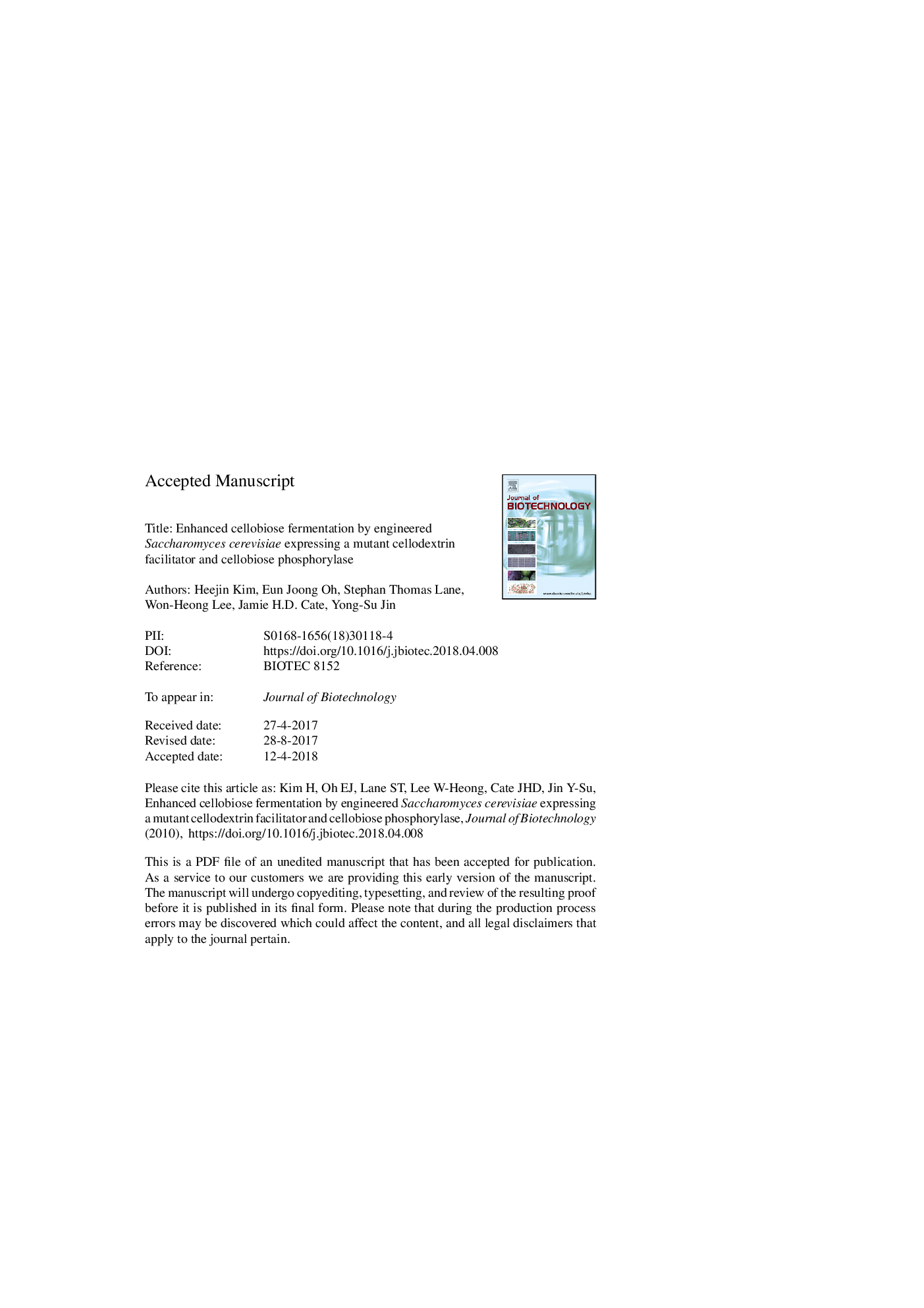| Article ID | Journal | Published Year | Pages | File Type |
|---|---|---|---|---|
| 6490312 | Journal of Biotechnology | 2018 | 28 Pages |
Abstract
To efficiently ferment intermediate cellodextrins released during cellulose hydrolysis, Saccharomyces cerevisiae has been engineered by introduction of a heterologous cellodextrin utilizing pathway consisting of a cellodextrin transporter and either an intracellular β-glucosidase or a cellobiose phosphorylase. Among two types of cellodextrin transporters, the passive facilitator CDT-2 has not enabled better cellobiose fermentation than the active transporter CDT-1, which suggests that the CDT-2 might be engineered to provide energetic benefits over the active transporter in cellobiose fermentation. We attempted to improve cellobiose transporting activity of CDT-2 through laboratory evolution. Nine rounds of a serial subculture of S. cerevisiae expressing CDT-2 and cellobiose phosphorylase on cellobiose led to the isolation of an evolved strain capable of fermenting cellobiose to ethanol 10-fold faster than the original strain. After sequence analysis of the isolated CDT-2, a single point mutation on CDT-2 (N306I) was revealed to be responsible for enhanced cellobiose fermentation. Also, the engineered strain expressing the mutant CDT-2 with cellobiose phosphorylase showed a higher ethanol yield than the engineered strain expressing CDT-1 and intracellular β-glucosidase under anaerobic conditions, suggesting that CDT-2 coupled with cellobiose phosphorylase may be better choices for efficient production of cellulosic ethanol with the engineered yeast.
Related Topics
Physical Sciences and Engineering
Chemical Engineering
Bioengineering
Authors
Heejin Kim, Eun Joong Oh, Stephan Thomas Lane, Won-Heong Lee, Jamie H.D. Cate, Yong-Su Jin,
